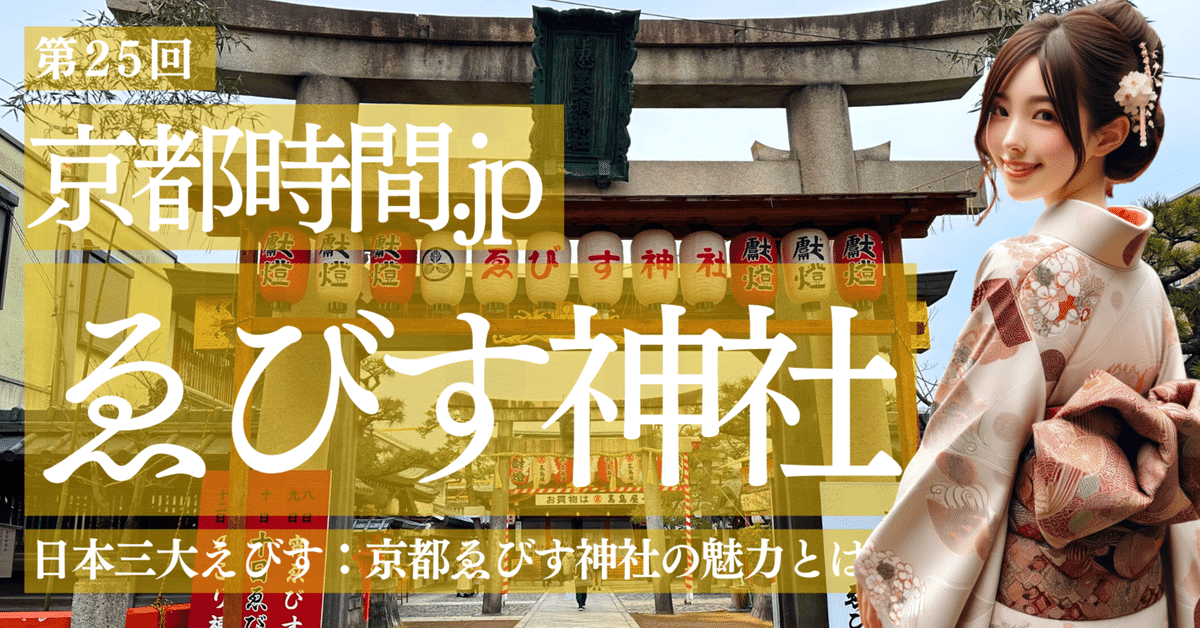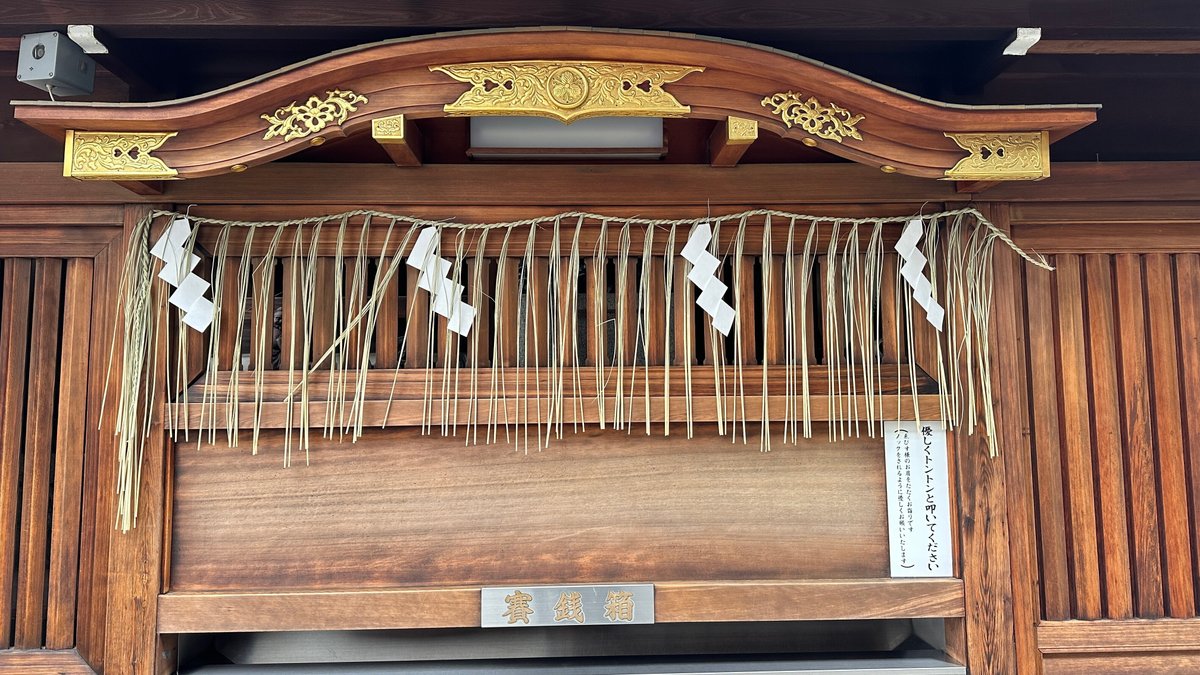
【京都時間.jp】第25回 日本三大えびす:京都ゑびす神社の魅力とは
京都ゑびす神社は、その古き良き伝統と現代の信仰が融合する、魅力あふれる聖地です。西宮、大阪今宮神社と並び「日本三大えびす」と称されるこの神社は、その起源を約800年前、土御門天皇の建仁2年(1202年)にさかのぼります。禅の祖として知られる栄西禅師が建仁寺の建立に際し、その鎮守としてゑびす神社を創建したのです。

栄西禅師は日本臨済宗の開祖であり、その足跡は日本の宗教史に深い影響を与えています。比叡山で天台教学を修めた後、中国へ渡り、禅に深い理解と興味を持ち帰国。その後、日本における禅の普及に尽力しました。栄西禅師が帰国時に遭遇した暴風からの救済伝説は、恵美須神との深い関係を示しています。この伝説がゑびす神社の信仰の根底にあり、商売繁盛や家運隆昌の祈願の場として広く知られるようになりました。

ゑびす神社は、節目を正しく、真直ぐに伸びる竹の葉を模した「商売繁盛の笹」を御札として授与します。これは、繁栄と長寿を象徴し、日本全国で広く親しまれています。笹は松竹梅の中でも特に縁起が良いとされ、その弾力性や常緑性から多くの人々に愛されています。

神社の境内には、摂社として菅原道真を祀る小松天満宮や、平安時代の歌人・在原業平を祀る岩本社などがあり、日本の歴史と文化の深さを感じさせます。また、財布や名刺の供養塚があり、ビジネスに関連する信仰の深さが垣間見えます。これらは、商売繁盛を願う人々の感謝の気持ちを形にしたもので、訪れる人々にとっては新たな発見と感動を提供します。

年間を通じて多くの祭典やイベントが行われる中でも、特に「十日ゑびす大祭」は見逃せません。この期間中、神社は商売繁盛・家運隆昌を祈願する参拝者で賑わいます。吉兆笹の授与、神楽の奉納など、伝統的な儀式が数多く行われ、訪れる人々を魅了します。

さらに、ゑびす神社で毎年授与される干支の絵馬は、当代の宮司である中川 久公 氏の原画によるもので、素晴らしい芸術性があります。これらの絵馬は、新年を迎えるにあたり、幸運と繁栄を願う人々の心を映し出しています。

私がこの神社を訪れた際に感じたのは、その厳かな雰囲気と穏やかな時間の流れの中で、心が洗われるような感覚でした。歴史の深さを感じさせる一方で、現代に息づく信仰の形が見事に融合していることに驚きました。神社の静けさの中で、商売繁盛と安全な旅の祈りを捧げるとともに、日本の伝統と文化の豊かさを改めて感じることができました。訪れるすべての人に何かを与えてくれる特別な空間であり、日本の精神性と文化遺産の重要な一部として、これからも多くの人々に愛され続けることでしょう。

Kyoto's Ebisu Shrine is a charming sanctuary where ancient traditions and modern faith merge seamlessly. Ranked alongside Nishinomiya and Osaka Imamiya Shrines as one of the "Three Great Ebisu Shrines in Japan," its origin dates back about 800 years to the reign of Emperor Tsuchimikado in 1202.
The shrine was established by Zen master Eisai, the founder of the Rinzai school of Zen Buddhism in Japan, to protect the newly built Kennin-ji Temple.
Eisai, after studying Tendai Buddhist doctrine at Mount Hiei, traveled to China and returned to Japan with a deep understanding and interest in Zen. He played a pivotal role in popularizing Zen in Japan. The legend of his miraculous salvation from a storm upon his return is closely tied to the Ebisu deity, laying the foundation for the shrine's reputation as a site for prayers for business prosperity and family fortune.

Ebisu Shrine bestows "sasa," bamboo leaves symbolizing business prosperity, as talismans. These represent prosperity and longevity, cherished throughout Japan. Bamboo, known for its resilience and evergreen nature, is revered among pine, bamboo, and plum, the three auspicious plants in Japanese culture.

The shrine complex includes subsidiary shrines like Komatsu Tenmangu, honoring Sugawara no Michizane, and Iwamoto Shrine, dedicated to the Heian-era poet Ariwara no Narihira. These elements underscore Japan's rich history and culture. The shrine also features monuments for the consecration of wallets and business cards, reflecting the depth of business-related faith. These monuments symbolize the gratitude of those praying for business success, offering new discoveries and inspiration to visitors.
Among the many festivals and events held throughout the year, the "Toka Ebisu Festival" is a highlight, attracting throngs of worshippers praying for prosperity and fortune. The festival features the distribution of auspicious bamboo, and the performance of traditional Kagura music and dance, captivating all who attend.

Additionally, the zodiac ema (votive tablets) distributed annually at the shrine are original works by the current chief priest, Hisatomo Nakagawa, whose artistic and historical value is immeasurable. These ema reflect the hopes of those seeking luck and prosperity in the New Year.
During my visit to the shrine, I was struck by the solemn atmosphere and the sense of peace and purification. I marveled at the harmonious blend of deep historical significance with living faith. Amidst the tranquility of the shrine, I offered prayers for business prosperity and safe travels, gaining a renewed appreciation for Japan's rich traditions and culture. This special space, offering something to every visitor, is an essential part of Japan's spiritual and cultural heritage, destined to be cherished for many years to come.
この記事が気に入ったらサポートをしてみませんか?
